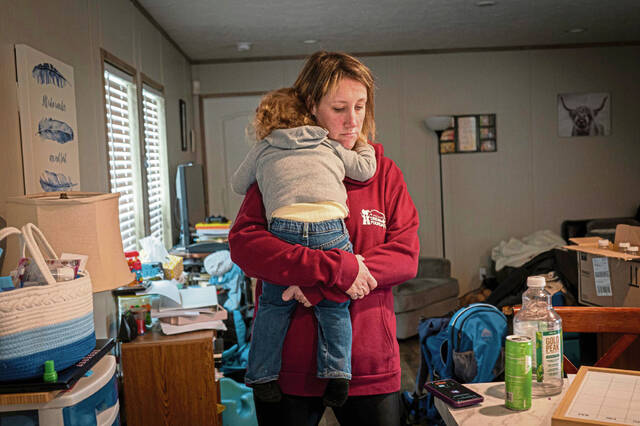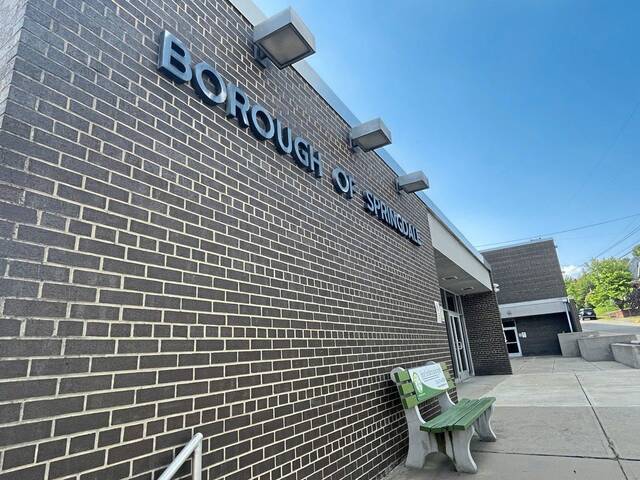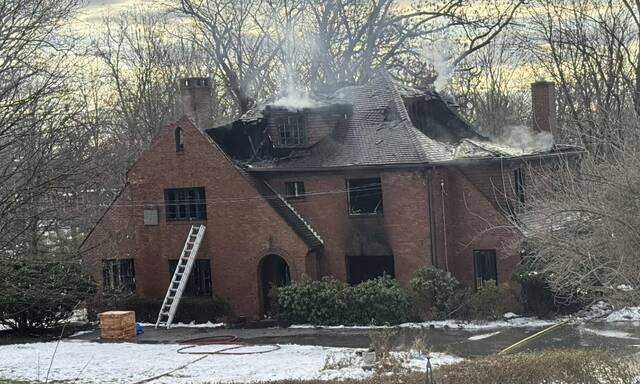Math and reading scores among America’s 13-year-olds fell to their lowest levels in decades, with math scores plunging by the largest margin ever recorded, according to the results of a federal test known as the Nation’s Report Card.
The results are the latest measure of deep learning setbacks in the wake of the covid-19 pandemic.
Still, superintendents from several school districts in the region say scores on the Pennsylvania System of School Assessment are climbing and that the return to in-school instruction has been key.
In the national sample of 13-year-old students, average math scores fell by 9 points between 2020 and 2023, and reading scores fell by 4 points in the same time frame. The National Assessment of Educational Progress was administered from October to December last year to 8,700 students across the country in each subject.
Math and reading scores had been sliding before the pandemic, but the latest results show a large drop that erases earlier gains in the years leading up to 2012. Scores on the math exam, which has been given since 1973, are at their lowest levels since 1990. Reading scores are their lowest since 2004.
Jeannette City School District Superintendent Matthew Jones is not surprised by these results.
“It makes sense based on the national and global trends of struggling to teach during and after the pandemic,” Jones said. “The pandemic taught us that the most effective way for students to explore and engage is face-to-face.”
Common denominator
Students from almost every race and ethnicity saw math scores slide, but the steepest drops in the national test were among American Indian students, at 20 points, and Black students at 13 points. The decline for white students was 6 points, while Asian students held even.
Jones said closing the performance gap among race is the biggest task to address for schools across the nation.
“In general, at-risk students who are below the poverty threshold, face housing issues and so forth, do not perform as well as those who don’t,” Jones said. “We as a district have been looking at this long before the pandemic, and it is easily one of the biggest tasks we’re facing, and the nation, along with mental health.”
Designed to measure basic skills in math and reading, the national exam has students read passages and identify the main idea or locate certain information. In math, they were asked to perform simple multiplication and tackle basic geometry. Most questions were multiple choice.
When asked about their reading habits, fewer students than ever say they are reading for fun every day. Just 14% reported daily reading for pleasure, down from 27% in 2012.
The test also revealed a troubling increase in student absenteeism. The share of students missing five or more days of schools in a month doubled since 2020, reaching 10% this year.
Measurement methods
Hempfield Area Superintendent Tammy Wolicki has seen some different trends in her school district.
“Student achievement was hampered by the pandemic in the 2020-2021 school year; however, student achievement increased in (English and Language Arts) in the school year 2021-2022,” Wolicki said.
Wolicki also said the school’s lower performance in math versus reading is because of the frequency of instruction.
“In my opinion … reading and writing are practiced and reinforced in all subjects every year,” she said. “Some mathematical concepts are instructed only within some units of instruction, such as fractions. The math assessment also requires students to apply both reading and math skills to solve word problems.”
Wolicki stressed that standardized testing is not the only indicator of reporting and comparing student achievement.
“Our mission statement is to engage and educate all students for personal success … students responding to multiple-choice questions is not an indicator of personal success,” Wolicki said. “We gauge success with graduates who are well prepared for their futures, if that is attending an Ivy League college or going into the workforce.
“Students must be able to problem solve, cooperate and collaborate with others, communicate well, and apply the knowledge, skills and understandings gained through the years of schooling.”
Anthony DeMarco, superintendent at Yough School District, also is seeing positive standardized testing results.
“We just got back the PSSA scores and are very pleased with the school’s performance,” DeMarco said. “We saw about a 5% increase in performance.”
DeMarco said these increased performance scores are due to getting back to “a normal routine without interruptions.”
“We were able to get focused this year … get back into a normal routine with a more consistent schedule,” he said. “We are very proud of our students and teachers, and it is great to look at something positive.”
DeMarco also said standardized testing is just one snapshot of an entire school year and does not paint the entire picture of a course.
“We do so many other things, like cirriculum examination, benchmark testing and so forth,” DeMarco said. “But I do think I can call this year my benchmark year, as we have had some great gains with the slow of the pandemic and can now look at more reliable results.”
Upward trend
Christopher Sefcheck, superintendent of New-Kensginton Arnold School District, recently has reviewed this past school year’s standardized testing scores and has seen “the biggest jump” in recent years.
“We have definitely seen a trend of higher scores this year,” Sefcheck said. “Our growth improved a little last year, even more this year, so we hope that continues.”
Sefcheck said the district did a curriculum audit after the 2021-22 school year and met several times with teachers to review data and trends seen based on standardized learning results, allowing teachers to hone in on specific areas where students are struggling.
“Those meetings combined with being … in school all year is why we saw a jump in scores,” Sefcheck said. “We’ll do the same preparations this year.’
Sefcheck said the district at large has performed better in science and reading versus math but “standardized testing is not the end-all be-all.”
Jones said that his school district has seen a rise in mental health needs over the last decade that has also affected the district’s standardized testing performance.
“I think with the already trends of more reports of students with anxiety and other mental health challenges, covid just rapidly grew those needs,” Jones said. “Our primary focus is to meet the mental and social needs of students to give them a learning environment that they can succeed in.”
Jeannette hired a full-time school psychologist and two on-site therapists, as well as started contracts with other private mental health service programs.








